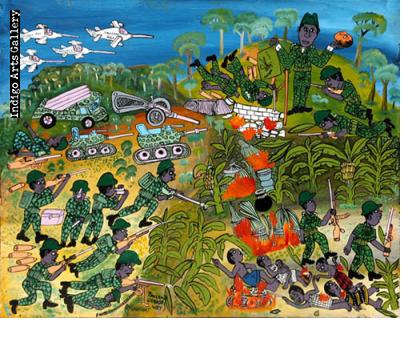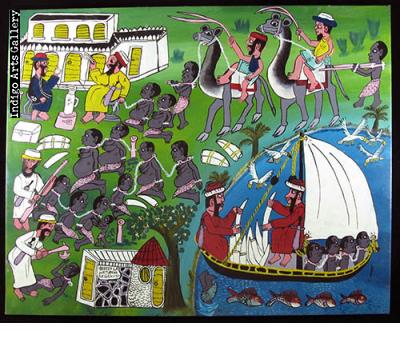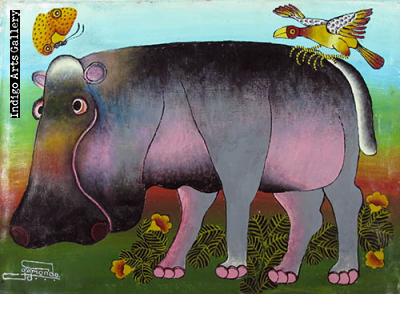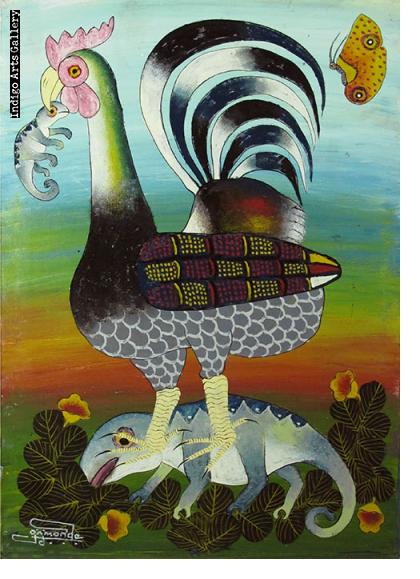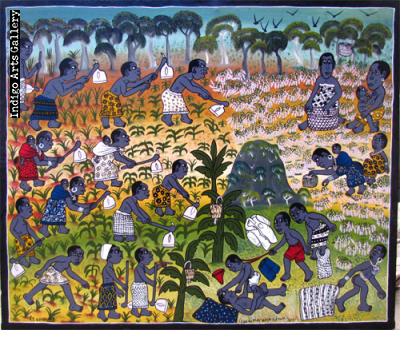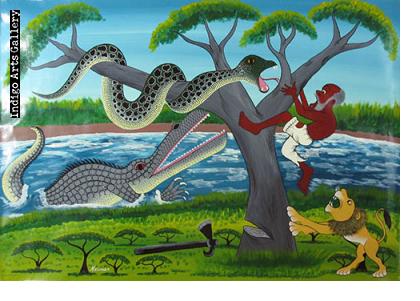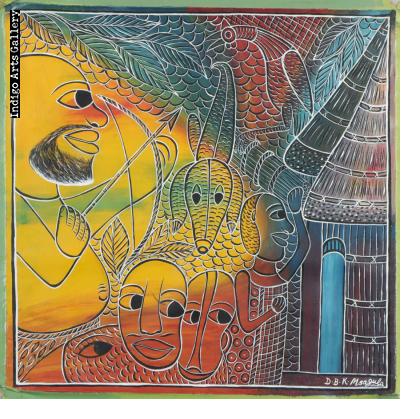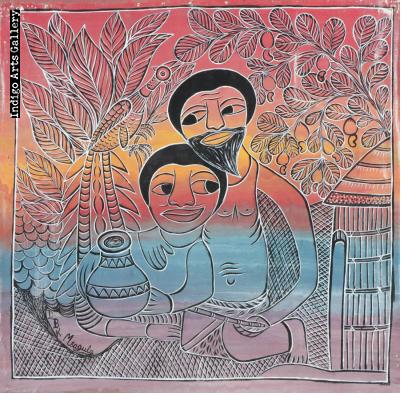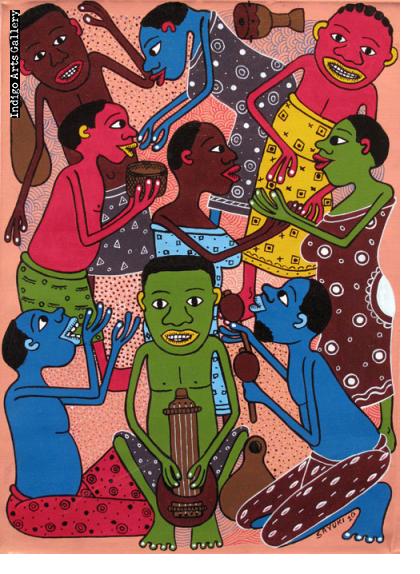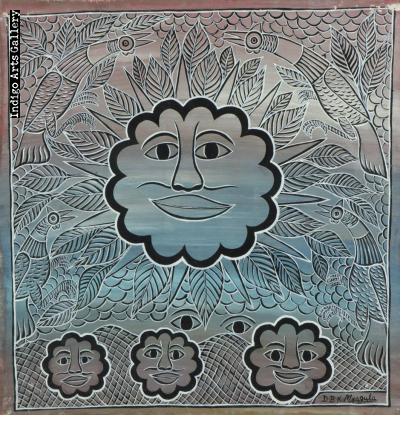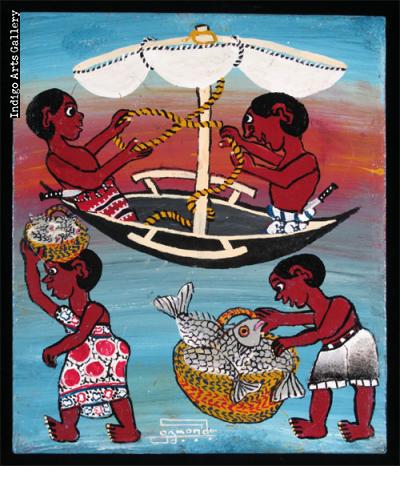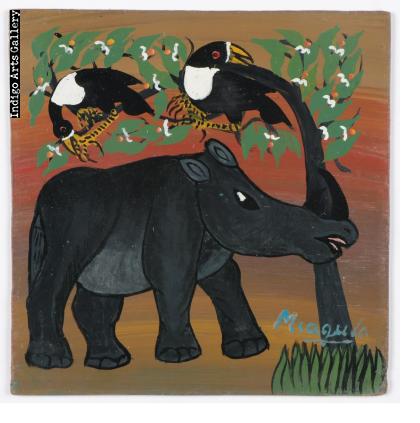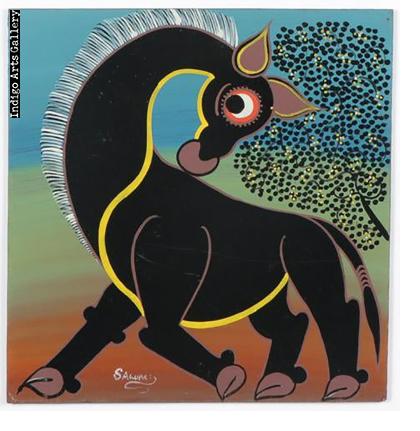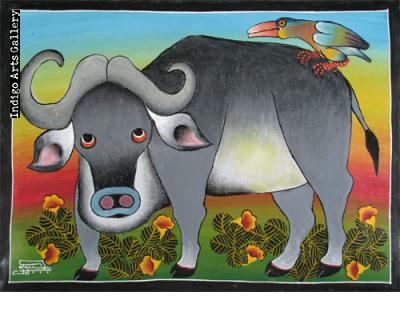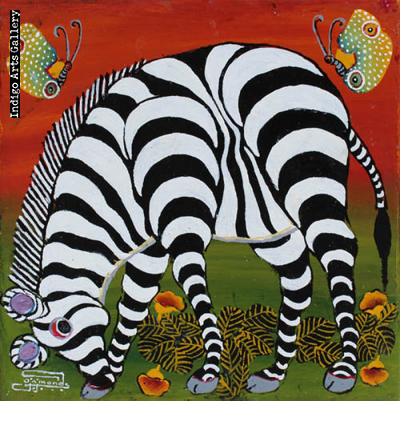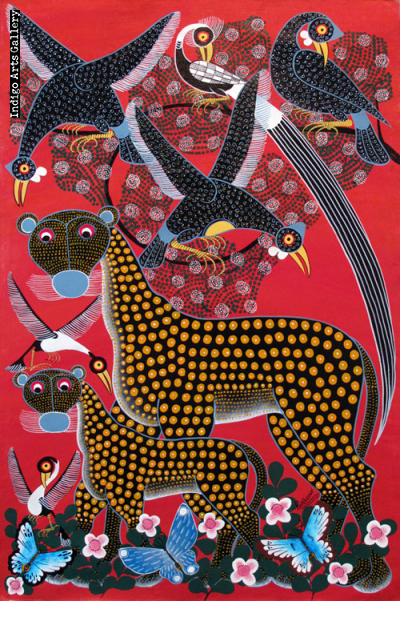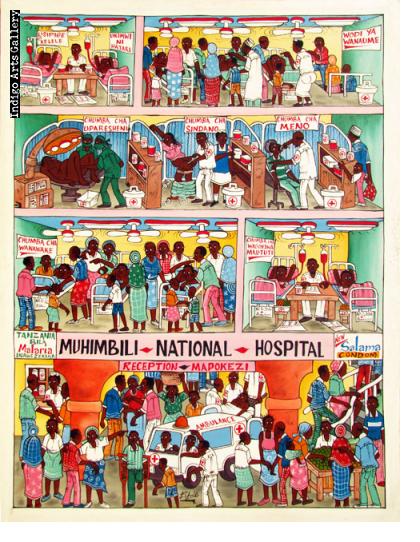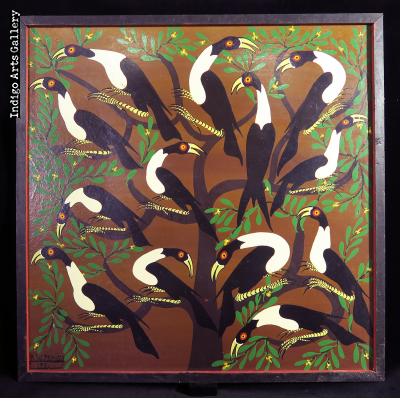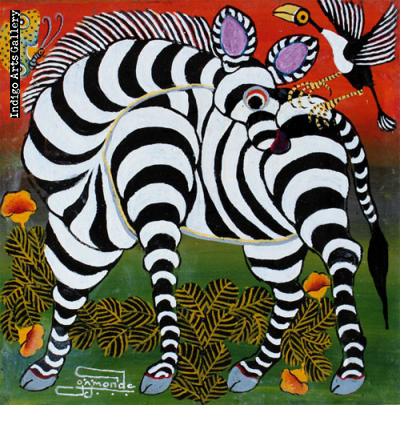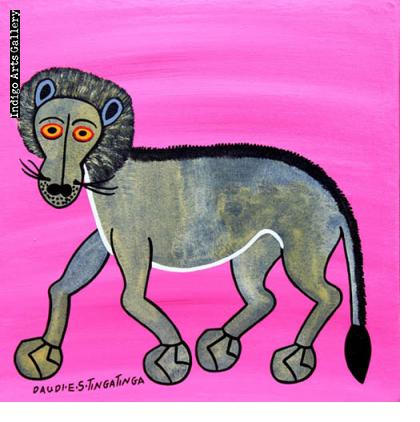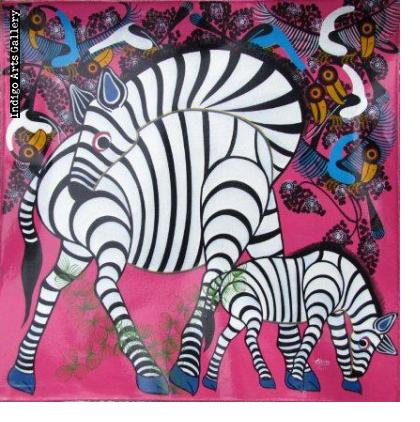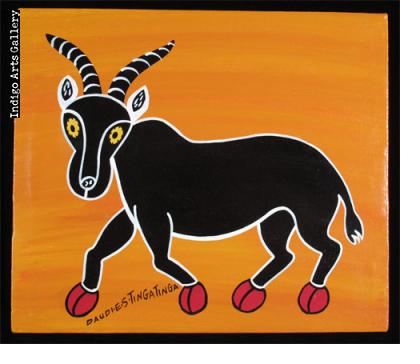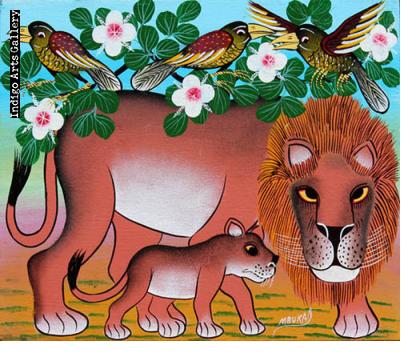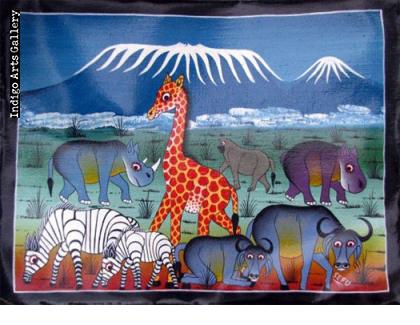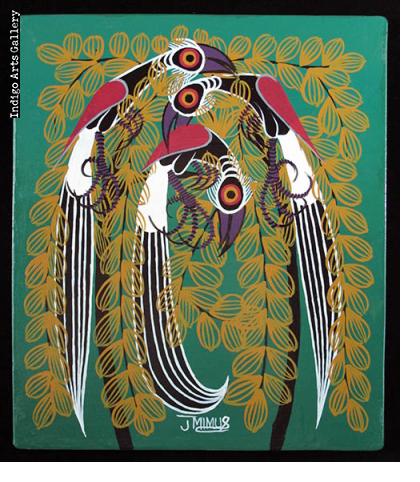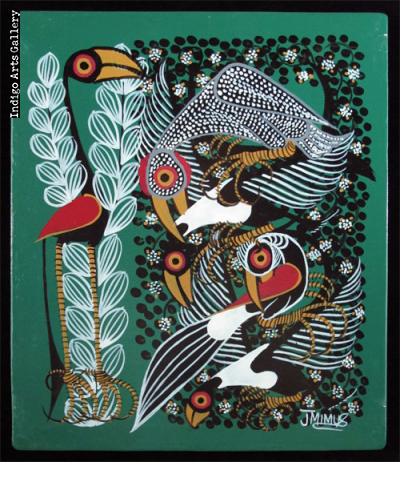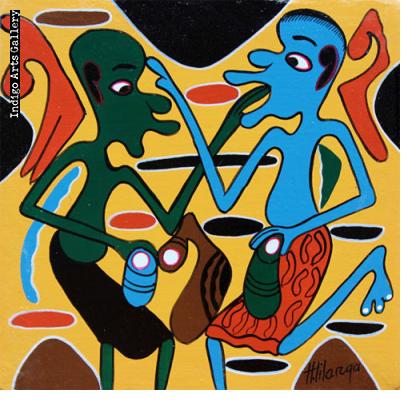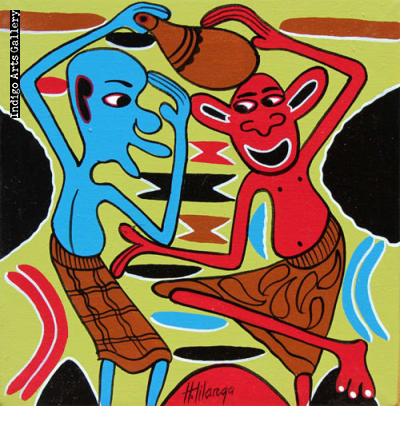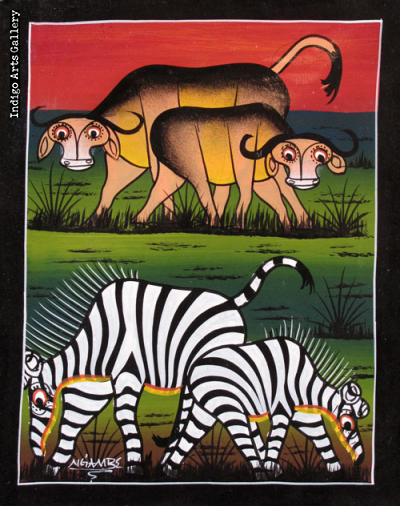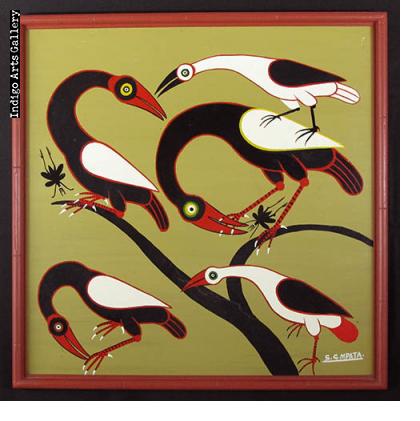
In Tinga Tinga Today, Indigo Arts considers the unique genre of popular painting that has flourished in Tanzania since the late 1960's. With the passing of Omary Amonde, the last of the "first generation" Tinga Tinga artists, we look at the legacy of founder Edward Saidi Tingatinga, and the directions taken by the artists today. Tinga Tinga painting takes its name and its inspiration from Edward Saidi Tingatinga (1932 – 1972). Born in a village in the far south of the colony then known as Tanganyika, he migrated north to the capital of Dar es Salaam in search of work in 1957. He worked as a gardener for expatriates before finding a better job as ward attendant at Muhimbili National Hospital. A resourceful man, Tingatinga was ever trying other ways to support his family. Admiring the apparent ease with which itinerant artists from the Congo sold their “jungle” paintings to European tourists, he determined to try his own hand at painting. He used readily available materials – high-gloss bicycle enamel on square hardboard ceiling tiles. His elegantly simple paintings of wild animals, birds and village scenes were naïve, charming and sold quickly. Others were inspired by his success, and he agreed to take on six apprentices, mostly members of his family or his mother’s Makua tribe. But Tingatinga did not enjoy his success for long. One night in May 1972 he was shot dead by the Dar es Salaam police in what is generally described as a “case of mistaken identity”. Though his painting career spanned only four years, Edward Saidi Tingatinga launched a painting industry in Tanzania. After his death his original six students organized themselves in a group that came to bear his name. The artists worked in a “naïve” style inspired by their teacher – some quite literally, and others expanding into new subjects and more elaborate, even baroque, styles. In the ensuing forty years Tingatinga painting has become the ubiquitous national art of Tanzania, in quality that ranges from very original naïve art to decorative but derivative work that is often dismissed as “airport” art. The work shown here is nearly all by members of the Tinga Tinga Cooperative, but it represents the several distinct directions in which the style has evolved.

